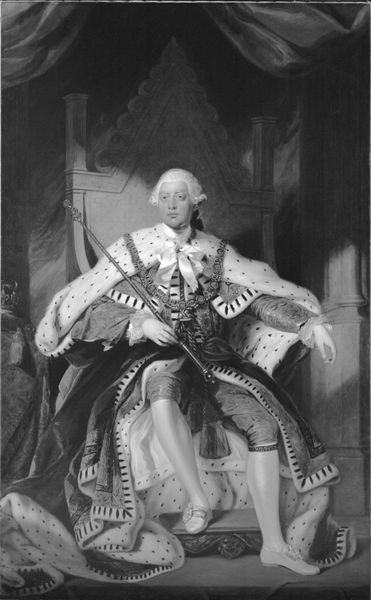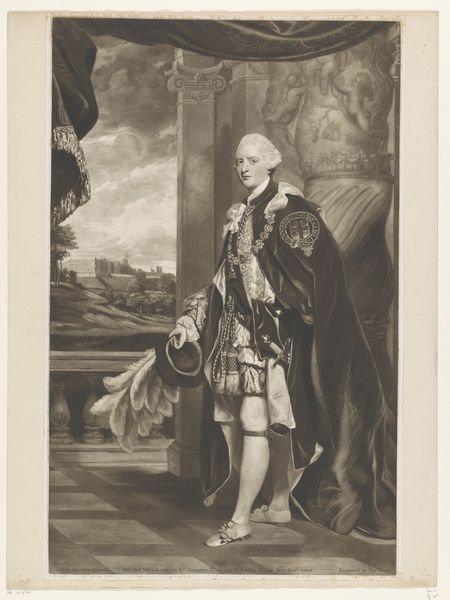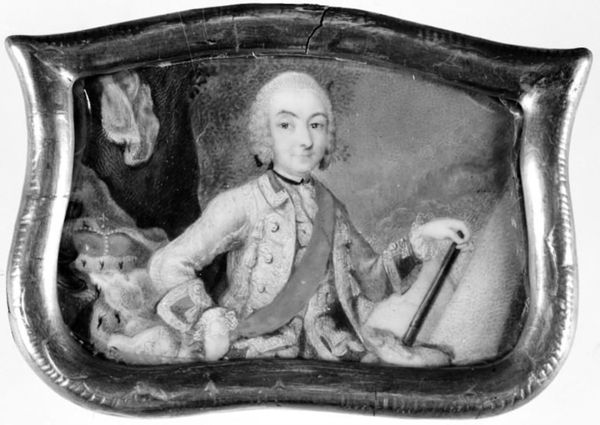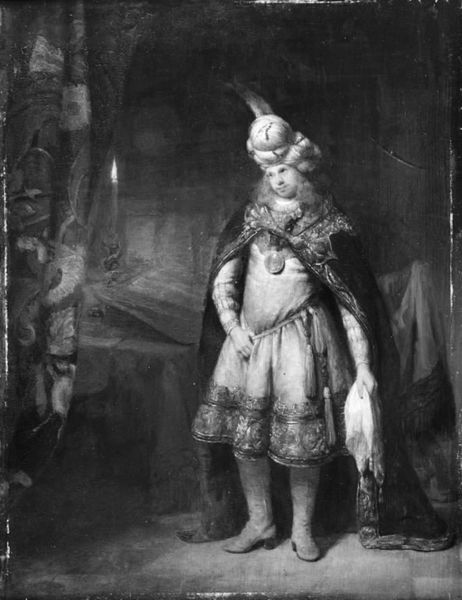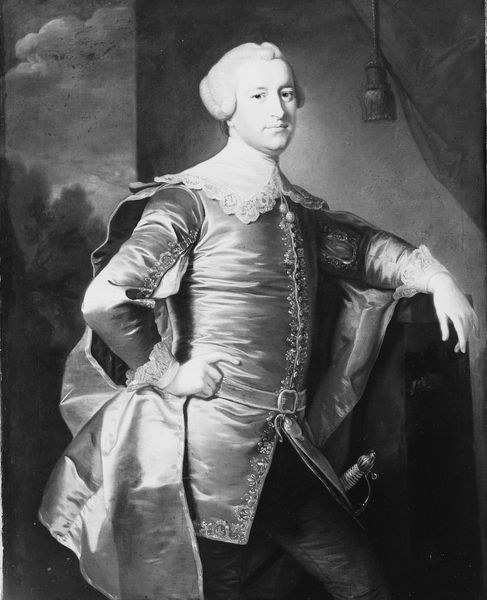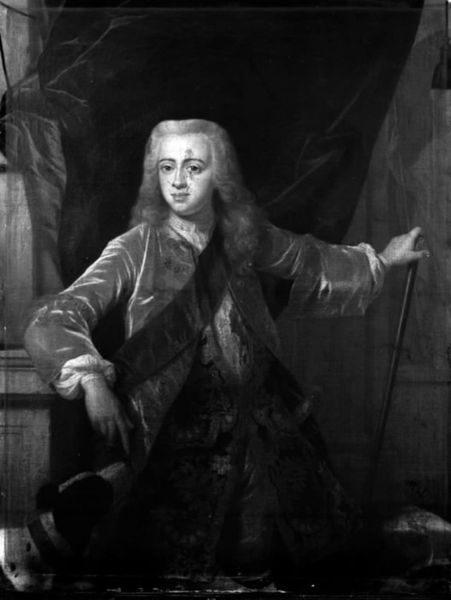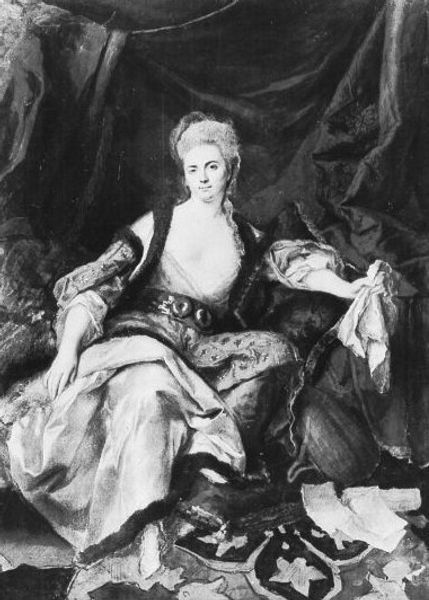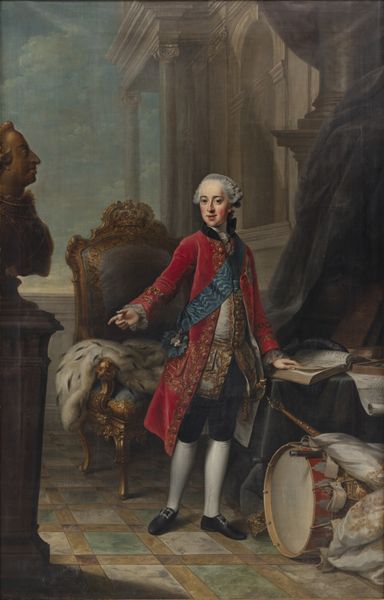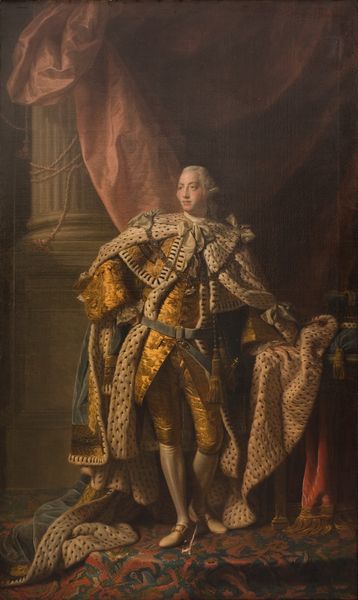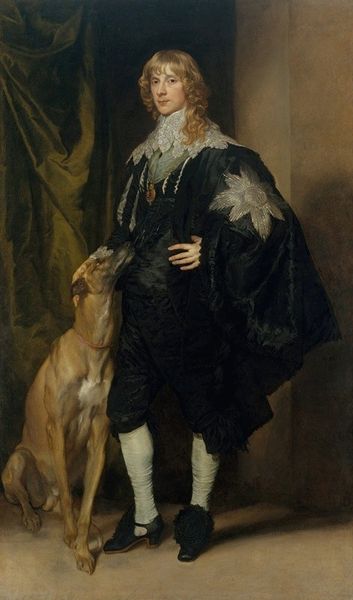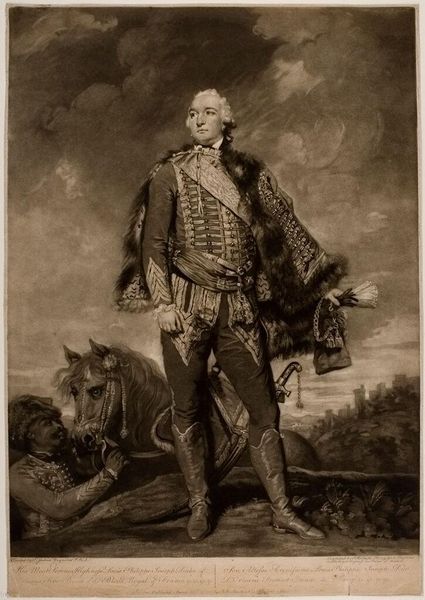
painting, canvas
#
portrait
#
painting
#
canvas
#
black and white
#
monochrome photography
#
academic-art
#
monochrome
#
rococo
#
monochrome
Dimensions: 228.5 cm (height) x 144 cm (width) (Netto)
Curator: Immediately I am struck by a sense of poised melancholy, perhaps? Everything is rendered in almost ghostly monochrome—very elegant, but also quite sad, wouldn't you agree? Editor: Indeed, this canvas is C.G. Pilo's "Portrait of Christian VII as Crown Prince," created in 1762. While we experience it today in shades of grey, the original work surely offered a full, vibrant palette typical of the Rococo style. Consider that, for a moment, as you examine this canvas. Curator: Ah, context shifts everything! Knowing that it once possessed all the flamboyant colors of Rococo, and is now reduced to this… muted apparition, is strangely affecting. I find myself imagining the painting's lost vibrancy almost more vividly now. A little tragic, really. Editor: It is intriguing. When situating Christian VII within historical discourse, we encounter varied portrayals, and this painting seems to capture an early stage of the royal subject's complex narrative. Here is a boy on the cusp of immense power, yet already shadowed, perhaps reflecting some awareness of his own vulnerabilities or limitations. Curator: Or perhaps, quite simply, Pilo was having a grey day! Still, one senses the hand of a master here, yes? The rendering of fabrics is superb, all those tiny, glistening details in what I assume used to be a gorgeous brocade... he is even managing to make marble appear supple. Editor: The technical skill is certainly evident, demonstrating Pilo's capacity for capturing texture and form even in monochrome. But beyond mere technical prowess, consider the politics inherent in portraiture during the era. How does this depiction serve to construct a particular image of young Christian, legitimizing his rule and positioning him within the established order? Curator: Power, always humming beneath the surface of things. Still, to bring it back to the surface for me is the feeling the piece now emanates. It has become something elegiac – a faded memory of power, a ghost of gorgeous color. Editor: It’s as if the reduction to monochrome allows a stark confrontation with the underlying social and political structures, a reminder of the often-overlooked layers of historical narrative encoded within seemingly straightforward representations of power. Food for thought!
Comments
No comments
Be the first to comment and join the conversation on the ultimate creative platform.

